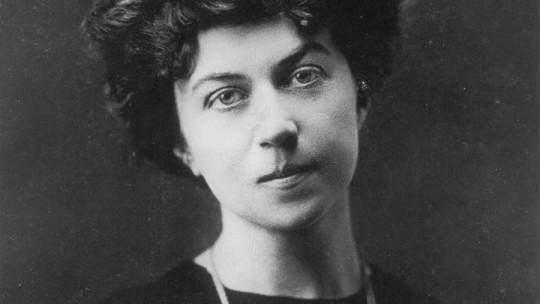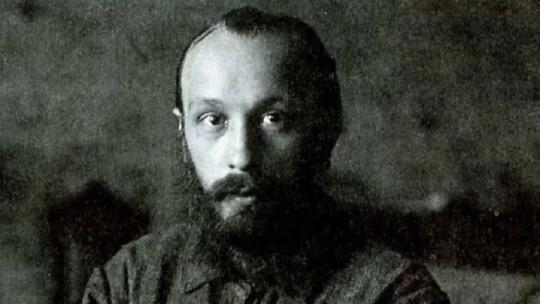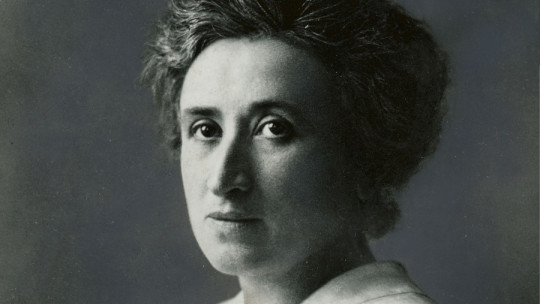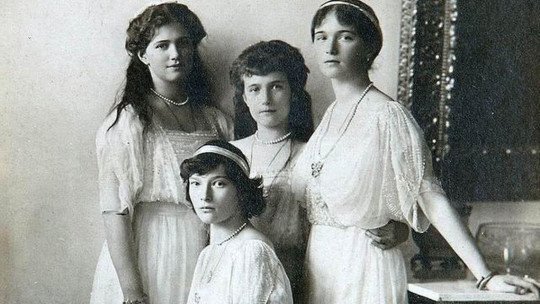With the October Revolution there were many social changes that occurred in Russia. The country went from a tsarist regime to a communist one, the Soviet Union was founded and several rights were recognized for the working people.
But as is often the case in much of the world, if women want their rights to be recognized they have to make a place for themselves in society, fight for them and, if they are lucky, overthrow the patriarchal system from within, something that Alexandra Kollontai was able to do. point of getting.
Today we will discover the life of this pioneering feminist, a key figure in the recognition of women’s rights in the Soviet Union and who had the honor of being the first ambassador of a modern nation, through a biography of Alexandra Kollontai
Brief biography of Alexandra Kollontai
Alexandra Mikháilovna Kollontai is one of the most important figures of Marxism, and her political and intellectual influence is present in many feminist and leftist movements. Here we will review her career.
Early years
Alexandra Mikhailovna Kollontai, born Alexandra Mikhailovna Domontovich, was born on March 31, 1872 in Saint Petersburg when Russia was still a tsarist empire.
His family was aristocratic, of Ukrainian origin that emerged in the 13th century. His father was Mikhail Domontovich, a general in the tsar’s service, and his mother was Alexandra Androvna Masalina-Mravinskaia, from a family of Finnish peasants with extensive fortune thanks to the logging industry.
Thanks to the financial resources available to her family, young Alexandra had access to private teachers who educated her throughout the year. When summer arrived, she spent her days reading on the farm her family owned in Karelia, a region belonging to Finland under Russian rule. So, From a very young age, Alexandra Kollontai immersed herself in the life of land tenants and agricultural workers
Alexandra was always very close to her father who instilled in her an interest in history and politics from a liberal perspective. On the other hand, she did not have such a good relationship with her mother, and on more than one occasion they had conflicts, especially when the young woman showed interest in continuing her studies. Alexandra’s mother considered it inappropriate for a woman to dedicate her life to studying or pursuing an intellectual life.
At the age of 19, Alexandra met her future husband, her cousin Vladimir Ludvigovich Kollontai. Although the young people fell in love, her mother was opposed to the marriage, since Vladimir was a young engineering student of modest origin. Likewise, they managed to get married and, after giving birth to Mikhail’s first child, Alexandra Kollontai She began to feel great disappointment in married life, seeing it as a trap that did not let her develop her intellectual activity, especially being able to write.
A free and socialist woman
Although she still loved her husband and son, in 1896 Alexandra He decided to join the socialist party and went to study in Zurich, Switzerland , leaving his family behind. The Swiss city was a real opportunity for Kollontai, since it had become the nerve center for students interested in socialism and, while there, she decided to study political economy.
At this time he became familiar with the ideas of Karl Marx and Vladimir Ilyich Lenin, in addition to learning about the thoughts of Karl Kautsky and Rosa Luxemburg. At this time she wrote her first article, in which she examined the influence of the environment on the development of children, and her first book investigated the living and working conditions of the Finnish proletariat in relation to industry. . The book was published in 1903 in Saint Petersburg, where it attracted attention among the most revolutionary sectors.
In 1899 he joined the Russian Social Democratic Labor Party , something that would begin her busy life as a revolutionary woman and key figure in Russian society of her time. This would lead her to participate in the revolutionary events of 1905 after having seen the massacre of workers in front of the Winter Palace.
During the First World War, Kollontai was openly against it. The reason for this was that he saw that the conflict was nothing more than another large-scale action marked by imperialist motivations that were at the service of the ruling class. In this sense, he participated in the Zimmerwald Conference of 1915 and, after several events that occurred in Imperial Russia, he would participate in the Bolshevik Revolution of 1917.
Under the shadow of Lenin
Alexandra Kollontai joined the Bolshevik movement in 1914, known to be the most radical faction of the Russian Social Democratic Labor Party , being established by Lenin himself. From 1915 Kollontai served as Lenin’s assistant, a great honor for a woman who wanted gender equality to be achieved. A few months before arriving in October 1917, Kollontai became the first woman elected as a member of the Central Committee of the Party.
After the October Revolution and the Bolsheviks having gained power, Alexandra Kollontai was appointed People’s Commissar of Social Welfare. She was also elected to the Executive Committee of the Petrograd Soviet, the new name for St. Petersburg. Kollontai actively supported Lenin in his vision of soviets as organizations for the exercise of power and keys to leaving bourgeois society behind.
After all this, Alexandra Kollontai immersed herself in the leadership of the Soviet Women’s Organization in 1920, known as the Zhenotdel. This fundamental milestone in her career as a feminist leader was due to the fact that Lenin promoted her appointment, turning her into a woman with a high capacity to initiate social changes from within.
Alexandra Kollontai She defined her social and feminist politics by moving her away from the family structure According to the Marxist ideas that he followed, the bourgeois family was the center of the oppressive and immoral social structures of capitalism, which made it necessary to change this institution or directly overthrow it to achieve greater citizen freedom. She and many socialists thought that the idea of the patriarchal family should be overthrown, making the care of children and the home the task of the entire society.
This is why Kollontai, with the support of Lenin, planned a network of institutions that would act as nurseries, daycare centers, restaurants and public laundries , services that would free women from caring for children and the home that had traditionally been assigned to them. In this almost utopian ideal, the aim was to make society act like a large family in which all its citizens were protected.
Taking advantage of her power within the Zhenodtel, Alexandra Kollontai enacted several feminist laws. She made marriage a civil and egalitarian institution between spouses, facilitated access to divorce for both parties and achieved that state protection was given to mothers and children, in addition to making maternal care in hospitals free.
Kollontai was changing his society, in which women had been subordinate to men, from the institutions themselves, making it legally binding. The Revolution had managed to lay the foundations for real equality between men and women, but it was Alexandra Kollontai who was making it real through legal means. Taking advantage of her influence, she tried to raise awareness about female sexual liberation in two works not without controversy: The new woman and Love in communist society.
Disputes with the party
But although Kollontai managed to mobilize a lot from the institutions themselves, he made several mistakes. The first was to depend too much on the figure of Lenin. Upon losing her support and being dismissed from the Zhenotdel, Kollontai’s entire political influence crumbled like a house of cards. As much as it was difficult for Kollontai to admit, the main character of his time was a man and he needed him to carry out his revolutionary reforms.
The reason why Lenin stopped supporting her was her defense of female sexual freedom. Kollontai He wanted women to move away from the traditional home life and achieve sexual freedom, without limiting themselves to having children as the main milestone in life The problem with this was that no matter how revolutionary the newly created Soviet Union was, her ideas were too radical, even for other socialist women, who had deep-rooted traditionalist ideas.
The other mistake was thinking that he would be able to replace the idea of the traditional family with that of a socialist state that would take care of domestic roles, no matter how much Lenin had supported it. Post-revolutionary Russia was still recovering from the civil war, facing hunger, death and desolation, causing citizens to take refuge in their families to move forward. The family was an institution that, although traditional and patriarchal, was the most resistant and secure of all.
The first female ambassador
Kollontai’s views were beginning to become bothersome within the party, especially to Joseph Stalin , whom he explicitly criticized. Many of her socialist colleagues accused her of sectarianism and she was even threatened with being expelled from the party. This is why in 1922 Alexandra Kollontai had already lost practically all of her political strength within Russia and Lenin relegated her to diplomatic functions.
Becoming an ambassador was not a disgrace, quite the opposite: she had become the world’s first female ambassador. She represented the Soviet Union in Sweden, Norway and Mexico and was also part of the Soviet delegation to the League of Nations, an institution similar to the modern UN.
Last years
Taking advantage of her diplomatic task, Alexandra Kollontai He traveled for more than 20 years through Europe and the United States , defending and extending her feminist socialist theses. But, while she was convincingly defending her revolutionary ideas abroad, the Soviet Union was changing again, this time against her. Joseph Stalin was taking advantage of his absence to overthrow several of the laws approved by Kollontai, causing everything achieved by revolutionary feminism to vanish.
In 1945, after the end of World War II, he returned to the Soviet Union. A year later she was nominated for the Nobel Peace Prize. She spent her final years in Moscow, writing her memoirs and serving as an advisor to the Russian Foreign Ministry Alexandra Mikhailovna Kollontai died on March 9, 1952 in Moscow, aged 79.









